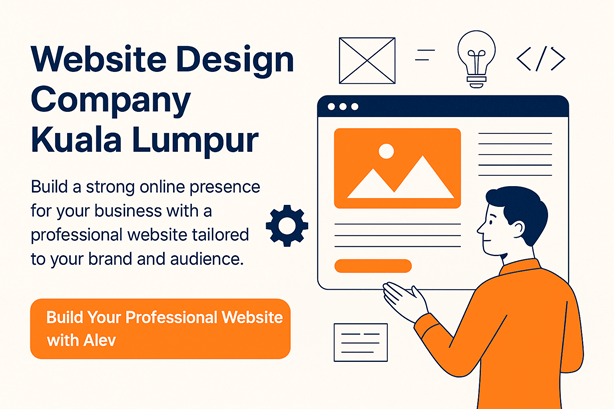It’s imperative to recognize that packaging design plays a significant role in influencing consumer decisions. As you explore the connection between packaging and sales, you’ll discover how thoughtful design can capture attention, convey your brand’s message, and enhance the perceived value of your product. By understanding these principles, you can create packaging that not only stands out on shelves but also drives customer engagement and boosts your overall sales performance. Let’s research into the key elements of effective packaging design and how they can transform your product’s market success.
The Psychological Triggers of Packaging Design
Packaging design goes beyond aesthetics; it taps into the psychological triggers that influence consumer purchasing decisions. Whether through visual elements or tactile sensations, your product’s packaging can evoke emotions, leading to a more favorable assessment. For instance, unique textures may create a sense of luxury, while quirky designs can enhance brand recall. Knowing how to activate these psychological triggers can set your product apart in a crowded marketplace, ultimately driving higher sales.
Color Chemistry and Consumer Behavior
Colors play a significant role in consumer behavior, often leading to immediate emotional responses. For example, red evokes excitement and urgency, which can stimulate impulse buying, while blue conveys trust and dependability. By strategically choosing colors that resonate with your target audience, you can align your brand’s image with their emotional triggers, ultimately boosting conversion rates.
The Power of Typography in Brand Perception
The typography you choose significantly impacts how your brand is perceived. Certain fonts can convey sophistication and elegance, while others may evoke a playful or casual vibe. A well-selected typeface establishes a visual identity that aligns with your brand’s values and message. Research shows that 95% of a product’s first impression comes from visual appearance, and typeface plays a major role in that perception, influencing everything from credibility to loyalty.
Typography not only reflects your brand’s voice but also affects readability and emotional connection. For example, sans-serif fonts are often viewed as modern and clean, making them suitable for tech brands, while serif fonts evoke traditionalism and reliability, appealing to heritage-focused products. Consider how the right font can enhance the emotional response from your target audience, leading them to trust and ultimately choose your product over competitors. A cohesive typography strategy can foster brand consistency that reinforces recognition and loyalty in your consumers’ minds.
Crafting an Unforgettable Unboxing Experience
Creating a memorable unboxing experience transforms a simple transaction into a sensory event that captivates customers. By investing in details that surprise and delight your audience, you invite them to become advocates for your brand. This experience can lead to increased sales, as satisfied customers are likely to share their excitement via social media or word-of-mouth, broadening your reach and drawing in new buyers who crave the same joy in their own purchases.
Sensory Elements: Sound, Texture, and Smell
The engagement of multiple senses during unboxing can significantly enhance the consumer experience. The crinkle of high-quality paper, the smooth texture of packaging, or a subtle scent can evoke feelings of luxury and care. Brands like Apple have perfected this approach, where each unboxing feels like an event, as sensory elements combine to create an anticipation that keeps customers coming back for more.
The Role of Storytelling in Packaging
Storytelling allows your packaging to serve as a narrative vehicle, connecting consumers to your brand on a deeper level. By incorporating elements of your brand’s journey, values, or the product’s origins, you create a relatable and compelling context. This narrative can forge emotional bonds with consumers, helping them to see the product as a part of a larger story worth sharing. For instance, products from brands like Warby Parker emphasize their mission and impact through their packaging, encouraging customers to not just buy, but invest in something bigger.
Aligning Design with Brand Identity
Effective packaging design must resonate with your brand identity to create a lasting impression on consumers. When your packaging reflects your brand values, personality, and mission, customers are more likely to feel an emotional connection with your product. Choose colors, fonts, and imagery that align with your overall brand strategy, ensuring that every element communicates who you are and what you stand for. A cohesive design enhances brand recognition and builds trust, ultimately leading to increased loyalty and sales.
Cohesive Visual Language Across Product Lines
Maintaining a cohesive visual language across your product lines establishes familiarity and helps consumers identify your offerings easily. Consistent use of design elements like logos, colors, and typography ensures that your products stand out on shelves while reinforcing your brand’s identity. This not only simplifies the decision-making process for customers but also contributes to a stronger overall brand presence. You build a recognizable portfolio that strengthens consumer loyalty with a unifying design approach.
Differentiating from Competitors through Unique Design
Unique packaging design sets your products apart in a crowded marketplace, making them more attractive to potential buyers. You can capture attention through innovative shapes, engaging graphics, or environmentally friendly materials that reflect your brand ethos. By offering something distinctly different, your packaging can create a memorable first impression, encouraging consumers to choose your products over competitors. Emphasizing uniqueness is key to standing out in both physical and online retail environments.
To effectively differentiate your products, consider the use of limited edition designs or regional packaging that caters to specific markets. For instance, Coca-Cola’s personalized bottle campaign featured individual names, creating a sense of personal connection with consumers. Similarly, brands like Apple leverage minimalist designs that emphasize sophistication and innovation, drawing attention without overwhelming consumers with excessive details. When you create packaging that balances uniqueness with brand identity, you not only attract curious buyers but also stimulate conversation and increase word-of-mouth marketing.
Sustainability: The New Standard in Packaging
Today, sustainability in packaging is no longer an option but a necessity. Consumers are increasingly looking for products that reflect their values, and eco-conscious choices have become a driving force in purchasing decisions. This shift is not merely a trend; it’s a fundamental change in consumer behavior that brands must embrace to remain competitive. For deeper insights on how professional packaging can enhance your brand’s profits, explore The ROI of Professional Packaging: Turning Design into ….
Eco-Friendly Materials and Consumer Appeal
Utilizing eco-friendly materials in your packaging can dramatically elevate your product’s appeal. Biodegradable, recyclable, and reusable options not only reduce environmental impact but also resonate with consumers who prioritize sustainability. Brands that use sustainable materials often see increased customer loyalty and positive public perception, while attracting eco-conscious buyers willing to pay a premium for greener choices.
The Impact of Green Design on Purchasing Decisions
Green design influences purchasing decisions by reinforcing a positive brand image and fostering trust among consumers. A 2020 survey revealed that 72% of consumers would choose a product with sustainable packaging over a traditional option, highlighting the direct link between environmental responsibility and consumer behavior. Brands that prioritize green design are more likely to attract a loyal customer base and effectively differentiate themselves in a crowded marketplace.
Research has shown that the impact of green design extends beyond mere consumer preference; it significantly affects your bottom line. Products with sustainable packaging often enjoy higher sales growth, aided by the increasing demand for eco-friendly solutions. Case studies demonstrate that brands like Unilever have successfully positioned themselves as leaders in sustainability, resulting in a notable rise in market share. Consumers are willing to pay more when they know their purchase contributes positively to the planet, leading to increased revenue and brand advocacy.
Data-Driven Design Decisions
Incorporating data-driven design decisions is fundamental to maximizing the impact of your packaging. By analyzing consumer behavior and preferences, you can refine your packaging designs to better appeal to your target audience. Utilizing insights from sales metrics, market research, and consumer studies allows you to create packages that stand out on the shelves and resonate with buyers on a deeper level.
Analyzing Consumer Feedback and Sales Trends
Consumer feedback is a goldmine for understanding what truly appeals to your audience. Monitoring direct responses through surveys, social media interactions, and reviews reveals patterns in preferences. Coupling this qualitative data with quantitative sales trends enables you to determine which packaging designs lead to higher conversion rates, guiding your optimization efforts.
A/B Testing: Perfecting Your Packaging Approach
A/B testing showcases the effectiveness of different packaging designs. By presenting two variations to your target market simultaneously, you gather statistically significant results about their preferences. This iterative approach reveals what elements resonate best, whether it’s color, layout, or messaging, and allows for informed adjustments to enhance appeal and drive sales.
When conducting A/B testing, focus on one design element at a time to isolate its impact accurately. For instance, if you’re testing different color schemes, ensure both designs carry the same logo and product information. Track engagement metrics, such as click-through rates or in-store purchases, to gauge consumer reaction. In a case study by a popular beverage brand, a subtle change in label color during an A/B test resulted in a 15% increase in sales, underscoring the power of informed, data-driven tweaks in packaging design.
Final Words
Summing up, effective packaging design plays a vital role in boosting your product sales by capturing attention and communicating value. By understanding your target audience and integrating visual elements that resonate with them, you can create a strong brand identity and enhance the perceived quality of your offerings. When you invest in thoughtful design that aligns with your marketing strategy, you not only attract more customers but also foster brand loyalty, ultimately leading to increased revenue and growth for your business.







